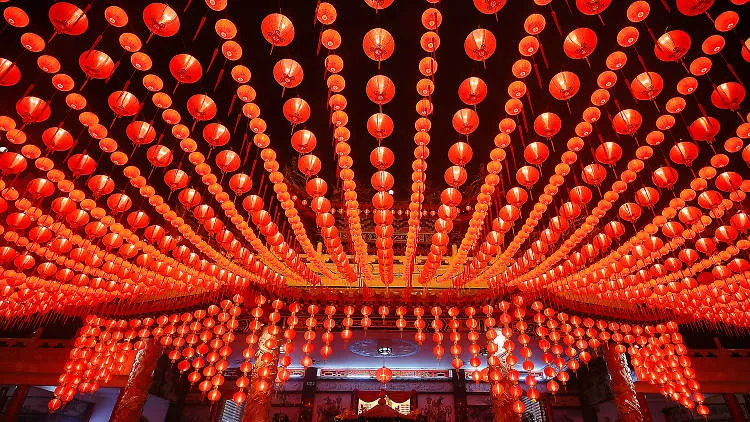
Amid a tumultuous period for China’s stock market, the upcoming Lunar New Year holidays, scheduled from February 9-17, stand as a critical juncture for investors seeking indicators of the nation’s economic vitality. The festive season, renowned for its consumer spending spree, may offer vital insights into the health of the world’s second-largest economy through key sectors like travel, retail, and entertainment.
Economic Sentiment and Spending Expectations
With the Chinese economy facing challenges from softening economic indicators, geopolitical strains, and a deepening real estate crisis, market sentiment has been notably pessimistic. The performance of Chinese stocks has lagged globally, prompting a close watch on the government’s market-stabilizing efforts, which some investors deem insufficient. The upcoming holiday spending figures are anticipated with caution, as subdued expenditures could exacerbate market woes, whereas unexpected robustness might lend support to related sectors.
Travel Sector Projections
The Lunar New Year is traditionally a peak time for domestic travel, with a record nine billion trips expected as millions journey to reunite with family. Northern destinations like Harbin, known for snow activities, and warmer southern locales like Hainan and Yunan, are predicted to attract the most travelers. Analysts from Citigroup Inc highlight potential gains for companies such as H World Group Ltd and China Tourism Group Duty Free Corp. Outbound travel is also set to increase, albeit modestly, as flight capacities expand and group tours resume, though consumer caution and a preference for value may temper the recovery.
Retail Spending Trends
Retail spending during the holiday period is expected to see only marginal increases, with any uplift in demand for categories like alcoholic beverages and sportswear viewed as temporary. Morgan Stanley analysts, including Lillian Lou, point out that consumer concerns about the broader economic landscape and job security may limit spending growth, affecting major brands like Kweichow Moutai Co and Li Ning Co. The prevalence of discounts and promotions across consumer categories underscores the challenges in sparking fundamental excitement without more decisive government intervention against deflationary pressures.
Entertainment and Gaming Sectors
The entertainment industry, particularly box-office revenues, will serve as another barometer of consumer sentiment. Despite strong demand for cinema, a modest 2% year-on-year growth is anticipated for the Lunar New Year box office, constrained by a lackluster film lineup. Companies such as Maoyan Entertainment, China Film Co, Wanda Film Holding Co, and Huayi Brothers Media Corp are among those to watch. Additionally, the casino hub of Macau is expected to witness a significant increase in visitors from mainland China, potentially benefiting operators like MGM China Holdings Ltd, with mass gross gaming revenue forecasted to recover by 120% compared to the Lunar New Year period in 2019.
Table: Key Sectors to Watch During the Lunar New Year
| Sector | Expectations | Companies to Watch |
|---|---|---|
| Travel | Record domestic trips, modest outbound growth | H World Group Ltd, China Tourism Group Duty Free Corp |
| Retail | Marginal spending increase, focus on value | Kweichow Moutai Co, Li Ning Co |
| Entertainment | Modest box-office growth, strong cinema demand | Maoyan Entertainment, China Film Co, Wanda Film Holding Co, Huayi Brothers Media Corp |
| Gaming | Surge in Macau visitors, gaming revenue recovery | MGM China Holdings Ltd |
As investors scrutinize the Lunar New Year’s economic indicators, the resilience and adaptability of China’s consumer market amid prevailing uncertainties will be closely observed. The festive season’s outcomes may not only reflect immediate economic sentiments but also influence longer-term investor confidence and strategic positioning within China’s evolving market landscape.
Featured image credit: Fazli Zainordin via TimeOut
